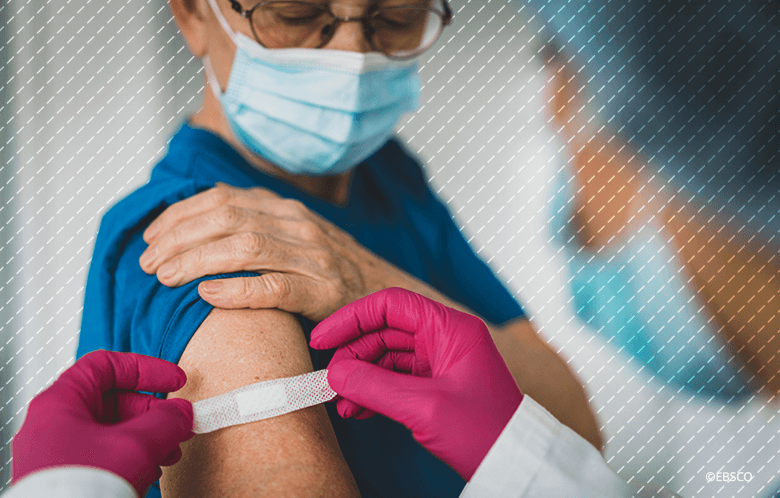Determining the optimal regimen of a drug or vaccine — including dose of the agent and schedule of administration — is an essential part of pharmaceutical research. It is also a requirement for approval from regulatory agencies including the United States Food and Drug Administrations (FDA) and European Medicines Agency (EMA).
The first stage of determining drug dosing begins in pre-clinical animal studies. From these studies, drug doses are converted to an estimated suitable dose for humans to be tested in phase I (first-in-human) trials. Phase I trials evaluate the safety of the agent in a small group of healthy volunteers and may also include escalating doses to assess toxicity and pharmokinetics.
Further dose investigation studies may be conducted in phase II trials. For these studies, groups of participants may be given different doses of the investigational agent to determine the optimal therapeutic range. For any given drug, the lowest dose that induces the desired effect with the fewest adverse events is an ideal target to progress to large phase III randomized trials to evaluate efficacy.
The liver is the primary site of drug metabolism and the rate of metabolism, along with absorption, distribution, and excretion, affects drug concentration in the blood, impacting the drug’s efficacy and toxicity. For example, if a drug is metabolized too quickly or has poor absorption, it may not exert its desired effect and a higher dose may be needed for clinical benefit. If a drug is metabolized or excreted too slowly, its toxicity may outweigh its benefit. A drug that is metabolized or excreted quickly at a dose with reasonable efficacy/toxicity profile may be a candidate for more frequent administration to keep the level of the drug in the body above a threshold to maintain clinical benefit.
Additionally, dosing is not always static for all populations and adjustments may be necessary depending on clinical factors (such as renal function), other medications, age, and weight.
Vaccines go through a similar sequence of clinical trials to determine optimal dosing regimens. In the Spring of 2020, trials were first initiated to evaluate COVID-19 vaccine dosing. Pfizer/BioNTech concluded that 30 µg of their lipid nanoparticle-encapsulated mRNA was optimal, while Moderna settled on 100 µg. Because the Johnson & Johnson COVID-19 vaccine is adenovirus-vectored, their dosing is based on adenovirus particles (5x1010 viral particles/injection).
Further dose investigations in children revealed that two 10 µg doses of Pfizer/BioNTech vaccine was suitable for children five-11 years of age. The Moderna COVID-19 vaccine is not yet authorized for children in this age group in the United States, though they have filed for regulatory approval for two 50 µg doses (half dose compared to adults) in children aged six-11 years in Europe.
Lower doses of COVID-19 vaccines in children, however, is due to a more robust immune system in younger people, meaning that less vaccine is required to induce a comparable immune response.
Lower doses of COVID-19 vaccines in children, however, is due to a more robust immune system in younger people, meaning that less vaccine is required to induce a comparable immune response.
It seems reasonable that the dose for COVID-19 vaccines in children is less than what is given for adults, however the rationale for dosing adjustments for vaccines in children is not the same as for drugs. Weight- and age-based adjustments for many medications are due to pharmokinetic profiles. That is, the blood concentration of many drugs varies by body weight. Lower doses of COVID-19 vaccines in children, however, is due to a more robust immune system in younger people, meaning that less vaccine is required to induce a comparable immune response. Several other vaccines are given at lower doses for children, including influenza vaccines. Additionally, some vaccines have special high-dose formulations for adults older than 65 years because of significant immune system dysfunction related to aging.
The schedule of COVID vaccine dosing for vaccines with multiple injections is based upon decades of research on the kinetics of the immune response. Unlike the pharmokinetics of a drug, in which the activity of the drug is linked to presence of that agent in the blood, a vaccine is meant to be a short-term message. The body takes that message and induces an immune response, which is a biological process that takes 10-14 days. This is the reason people aren’t considered fully vaccinated until 14 days after their final primary COVID-19 vaccine dose.
Administering the second dose of vaccine too early can interfere with the development of memory B cells and T cells, so Pfizer/BioNTech tested 21 days and Moderna tested 28 days in between immunizations. The three-to-four-week range was chosen for logistical reasons: to avoid interference with the primary immune response, yet get people fully vaccinated as quickly as possible. However, this does not mean this dosing interval is optimal. A study in the United Kingdom revealed that an extended dosing interval of Pfizer/BioNTech or AstraZeneca COVID vaccines (nine-12 weeks apart) resulted in higher antibody levels and better protection than the standard dosing interval.
Drugs and vaccines need to be evaluated in clinical trials to determine adequate dosing regimens. In both situations, the amount of agent and schedule of administration should have an acceptable efficacy/toxicity ratio. However, the pharmokinetic profile of a drug weighs heavily into dosing decisions, while vaccine dosing is dependent on inducing an immune response that confers protection, which is prominently influenced by age.



